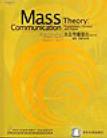大众传播理论
出版时间:2003-9 出版社:清华大学出版社 作者:戴维斯 页数:406
Tag标签:无
内容概要
《新闻与传播系列教材·大众传播理论:基础延展与未来(影印第3版)》是最新的大众传播学教材,吸纳了国际传播学界最新的理论和研究成果,比以前的版本更加重视前沿问题,比如媒介角色研究、传播的全球化、受众接受问题、媒介行为的评价等。《新闻与传播系列教材·大众传播理论:基础延展与未来(影印第3版)》的最大特点是媒介理论放在大众传播理论的中心位置。它按照历史的线索对大众传播理论进行了权威的介绍,描述了大众传播理论两大主要流派--经验学派和文化批判学派的产生和发展过程,对这两种学术传统是如何支持媒介文化运动的发展进行了总结性陈述,同时提出了一种将二者结合起来的新的媒介传播理论。 《新闻与传播系列教材·大众传播理论:基础延展与未来(影印第3版)》的作者是两位很出色的美国传播学教授。巴兰(Stanley J.Baran)在广播电视和电影研究方面获过很多奖项。戴维斯(Dennis K.Davis)博士是媒体研究的教授,多次获美国的传播学教学奖。这《新闻与传播系列教材·大众传播理论:基础延展与未来(影印第3版)》的叙述方式和思维逻辑独到、内容表述上简单洁明晰、体例也很新颖,每一章都提供相关的“重要人物及其著作”介绍。 《新闻与传播系列教材·大众传播理论:基础延展与未来(影印第3版)》适合作为新闻传播专业的大众传播学课程的核心教材或参考书,对广大新闻从业人员也不失为一本很好的案头书。我们推出这套原版教材就是希望学习者能够原汗原味地去理解和把握西方传播学的精髓和妙处。
书籍目录
前言第一部分 大众传播理论介绍第一章 介绍关于媒介的三个问题大众传播的定义和再定义媒介理论发展的五个时期大众社会与大众文化时期大众传播的科学研究视角的出现有限效果理论的出现文化批评理论,对有限效果理论的挑战适中效果视角的出现正在进行的论战理论探索批判与思考重要学者及其著作第二章 大众传播理论综述科学与人类行为分裂的社会科学理论的定义大众传播与理论小结理论探索批判与思考重要学者及其著作第二部分 大众社会与大众文化时期第三章 媒介产业的兴起与大众社会理论综述起源黄色新闻业的兴起大众传媒发展与衰退的循环大众社会的批判与关于媒介的大论战大众社会理论的假说……第十章 宣传时代媒介理论的兴起第五章 大众传播的规范理论第三部分 有限效果论的兴盛和衰退第六章 有限效果论的兴起第七章 中程理论与有限效果范式的强化第八章 挑战权威的范式:儿童、系统和效果第四部分 当代大众传播理论——寻求共识、面临挑战第九章 大众传播的批判和文化理论的兴起第十章 媒介和受众:关于媒介在日常生活中所扮演的角色的理论第十一章 关于媒介、文化和社会的理论第十二章 大众传播理论的趋势:寻求共识、面临挑战参考书目索引
章节摘录
We wrote the first and second editions of this textbook at a prosperous time in the life of our nation when U.S. media industries were undergoing rapid change. Amer-ican corporations were spreading around the world. Dot corn companies were thriv-ing in a "New Economy" that some thought likely to prosper for decades. New media technology was evolving so rapidly and new media applications were prolif-erating so fast that a new scale of "Internet time" was created to measure change."Brick and mortar"companies were distained in favor of virtual enterprises.Change was also going on in media theory and research. Theory was in fer-ment as new perspectives challenged long-standing notions. Researchers strug-gled with questions flowing from the changes in media. They debated how bestto understand the role of new media and chart their place among the well-established mass media. Considerable research focused on mass media entertain-ment and its effects. Researchers asked whether new media-based entertainmentwould displace established mass media. Would the Internet displace television or would the tube absorb the Internet? Would people pay the extra price to getHDTV? Did the protection of children from online smut require new laws? What would happen to face-to-face communication in the wake of the email onslaught? Virtual democracy? MP3? Web radio?On September 11, 2001, everything changed. As we wrote the third edition to this textbook, the Western world was reeling from the terrorist attack on the World Trade Center in New York and on the Pentagon in Washington. A new type of war was declared on terrorism. Americans were told to make important sacrifices and to be vigilant, but at the same time to carry on our daily lives as though September 11 had never happened. As authors, we faced a serious chal-lenge. When it comes to media theories, what is still relevant and what is unim-portant? How can and should we understand the role that media now play in the world that has 'been radically altered? In our previous editions we argued, "the price to be paid for our failure to understand the role of media is dear." We pointed to controversies over the effects of media violence and the banning of rap music lyrics.……
图书封面
图书标签Tags
无
评论、评分、阅读与下载
用户评论 (总计0条)
推荐图书
- 储域网设计与实现
- 全国计算机等级考试系列辅导教材
- 英文信函写作快易通
- 问题求解与编程概念
- 量子力学
- 数据结构与算法
- 无线通信与网络
- PowerPoint 2002范例入门与提高
- 软件构架编档
- ASP到ASP.NET迁移手册
- 多智能体原理与技术
- PowerBuilder9.0进阶开发篇<实例与技巧篇>(附光盘)
- Pro/ENGINEER 2001高级功能应用与编程处理
- JAVA编程原理
- 精通Visual Basic.NET 2003数据库开发
- 组件级编程
- 数据结构Java语言描述
- Java Web服务编程
- 离散数学
- 网上银行理论与实务
- 多智能体模型与实验
- 现代语音技术基础与应用
- 走向竞合
- 江南市场史
- 软件工程导论
相关图书
- 2003中国十所美术院校教师作品展作品集
- 医疗过错认定与处理
- 随机信号处理
- 程序开发心理学
- 转型经济中的会计与财务问题
- 李方桂先生口述史
- 量子力学新进展(第三辑)
- 全国计算机等级考试系列辅导教材
- 高等数学
- 光同步传送网和波分复用系统
- 楼宇机电设备管理
- 考研政治形势与政策
- Mechanical Properties Of Advanced Engineering Mate (精装)
- 远程通信技术
- 现代制造技术
- 梯度功能力学
- 芯片尺寸封装
- FoxBASE程序设计
- 软件能力成熟度模型集成(CMMI)培训教程
- 医疗纠纷防范与应诉
- VC++图像处理程序设计
- 微型计算机原理与接口技术
- Winsock 2网络编程实用教程
- 运营与业务支撑系统技术需求和方案设计指南
- 网络技术基础教程
